The Boomer Republic: How an Aging Elite Bankrupted the Future
Observations from the United States of Acrimony — on Gerontocracy, Generational Conflict, and Gambling.
The great defining event of the twenty-first century—one of the great defining events in human history—will occur in three decades, give or take, when the global population starts to decline. Once that decline begins, it will never end. We do not face the challenge of a population bomb but of a population bust—a relentless, generation-after-generation culling of the human herd. Nothing like this has ever happened before.
—Darrell Bricker
E pluribus unum—out of many, one—still graces America’s currency and remains on its Great Seal. It once captured America’s highest aspiration.
Unfortunately, today it feels more like E pluribus odium—out of many, resentment, anger, hatred.
Acrimony has become the national mood, not a symptom but a diagnosis. The country hums at a higher emotional frequency: outrage serves as background radiation, bitterness as civic glue—each a heaping pile of dry powder ready to explode with the faintest spark.
The headlines change, the hatred stays. Welcome to the United States of Acrimony, where the three Gs—Gerontocracy, Generational Conflict, and Gambling—together form the invisible architecture of decline.
n.b. Substack tells me that this email may be cut off. Please open it in a new tab if that is so.
n.n.b. What follows is not a condemnation, but a commentary on the shifting sands of this great experiment we call America and similar happenings around the globe.
The Boomer Republic
We don’t live in a democracy; we live in a Boomer Republic—an oligarchic gerontocracy wrapped in the faded rhetoric of opportunity.
The Baby Boomer generation that bought homes at twice their annual income now owns over half of all national wealth though they make up only 24% of the adult population.
This generation is arguably the richest in history, averaging $1 million in wealth per person in America.
The ladder to prosperity hasn’t just been pulled up; it’s been sold at auction.
Though things have begun improving, our government mirrors this imbalance. The median U.S. Senator is 64.7 years old (older than the typical retiree); the House median is ~57.5.
Political life has become a geriatric echo chamber, where laws are written by those who won’t live long enough to face their consequences. The can just gets kicked down the road until it ricochets right into the face of the young.
Housing tells the same story. In New York City—a kind of microcosm of the American housing problem—71% of elderly tenants occupy rent-stabilized apartments and enjoy an average $672 monthly discount versus 55% and $364 for non-elderly tenants.
Zooming out, according to Fannie Mae, home prices need to fall 40% or incomes need to rise 60% just to return the housing market to 2019 levels.
Worse, this is not just limited to the United States; it is a global problem.
Per Asia Inside: Why is Taiwan the Poorest Among Developed Countries? (emphasis mine):
Until recently, people could endure thanks to relatively low living costs. But after COVID-19, things changed: not only was home ownership already out of reach, but inflation has driven everyday expenses sharply higher.
Nothing illustrates the poverty of Taiwan’s youth more clearly than the phenomenon of the taofang. A taofang is essentially an apartment divided into multiple tiny units, often with illegal extensions that stick out like container boxes to maximize floor space. These cramped rooms, barely large enough to lie down in, rent for $290 to $360 a month in Taipei.
Since a third of their monthly salary has to go toward renting such cramped rooms, there is little capacity left to save for the future. Even if young people manage to find jobs despite a real unemployment rate in the mid-teens, their wages make it nearly impossible to ever buy a home.
Not long ago, one statistic showed that in order to afford a house in Taipei, a young worker would have to save their entire salary—without spending a single cent on food or living expenses—for 28 years.
The past is subsidized and squats; the future is priced out and prays to find something affordable.
COVID sealed the social contract in amber. For the first time in modern history, a nation declared—explicitly, unequivocally, and without reservation—that the old would be protected at any cost.
Schools closed.
Careers froze.
Dreams deferred.
We inverted the moral hierarchy and tore up the social contract: preservation replaced possibility.
Generational Conflict
When you’re told to wait your turn by people who already spent yours, rage starts to sound like reason.
The pandemic deepened inequality, harming lower-income and younger families most, while older cohorts were buffered by pensions, portfolios, savings, and healthcare safety nets.
French pensioners now earn more than working young people.
And the last time given official projections:
As Simon Ree aptly wrote: “It’s not only the fact that older demographics have higher incomes, they’re also in large part the asset owners.
Millennials and younger [sic] exist in a world where they can’t afford to get on the property ladder, they can’t afford to raise kids, and so they tend to not even bother getting married. They exist largely as wage earners, hurt by inflation and left behind by policy designed to fuel asset prices.
Result? Breakdown of the nuclear family and demographic ticking time bomb in the west.”
The bomb exists not only in the West, but also in young people’s brains. Their gray and white neuronal matter reverberates with fear, anxiety, and stress.
Per an NBC News poll, “Members of Gen Z are more anxious overall than members of other generations, with about a quarter responding that they “feel anxious or worried about the future” almost all of the time.”
If the West isn’t careful, this anger could boil over like it has in Nepal, the Philippines, Indonesia, Kenya, Madagascar, Peru and Morocco.
As Bloomberg (which, rather ironically, you cannot spell without boomer) reported:
While Europeans and Americans are showing their frustration by choosing more extreme politics, Moroccans joined a surge in Gen Z demonstrations in Africa and Asia against aging leaders, corruption, joblessness, income disparities and economies that have left people in their teens to late 20s behind.
Thousands have taken to the streets in countries including Madagascar, Indonesia, Kenya and Mongolia over the past year as dissatisfaction with the status quo has boiled over, mobilized on social media…
“What is distinct about the current wave of youth mobilization is the convergence of conditions across very different political environments,” said Bilal Bassiouni, head of risk forecasting at advisory firm Pangea-Risk. “Young people are confronting rising costs of living and weak job creation at the same time as political authority is concentrated in aging elites with little space for renewal.”
So the young revolt, not with torches but with tone: sarcasm, irony, defiance. They meme their anger because there’s no policy lever for it. Forget inheriting the system; they want to incinerate it.
An African proverb says: “The child who is not embraced by the village will burn it down to feel its warmth.”
And the “burn it down” instinct is bipartisan. The Trump voter in West Virginia and the Mamdani voter in Queens are gambling on the same emotional logic: if the game is rigged, throw out the dealer and rip up the green felt.
Different ideologies with the same primal impulse: rage as realism, risk as religion.
The Gambling Economy
When the future stops paying dividends, the present becomes a casino.
Open X and you’ll see portfolios flaunted like trophies: absurd YTD returns, green numbers glowing through the glass. You know the market’s running hot when people would rather screenshot their balance than sell it.
Welcome to the gambling economy, where rolling the dice, going all-in, and hitting on 17 have replaced saving, planning, and patience. This is reflected in how generations rank investments:
This, in part, is due to the legalization of gambling poisoning both the nation’s risk tolerance and its populace’s grip on reality.
Sports betting is legal in 38 states and DC and ~$35B is projected to be wagered on NFL games alone in 2024.
The Men’s Health 2023 Sports-Betting Survey provides more alarming statistics:
The young mirror that frenzy and volatility elsewhere: Millennials and Gen Z speculate more heavily in alternative assets and short-term trades than any generation before them.
I mean, South Korea literally streams live perps trading as though it’s an esports competition:
Though investing has blurred into betting and conviction into compulsion, an alternative strategy is this:
All over the globe we gamble with money, politics, and meaning because the spin itself feels like proof we’re still alive and have some way out.
We used to say: If it ain’t broke, don’t fix it.
Now it’s very, very broke and the instinct isn’t to fix it, but to either throw it out or burn it all down.
The young no longer save; they speculate.
They don’t plan; they parlay.
They treat politics like options trading—high-volatility bets with emotional leverage. Hell, even nihilism has become an investment strategy.
This is the new addiction: not to substances but to stakes.
The thrill of risk is the last proof that life can still change.
When the field is tilted, the only way to feel alive is to risk everything.
We gamble because losing feels less dead than standing still.
The Vicious Cycle
Gerontocracy feeds conflict.
Conflict fuels gambling.
Gambling reinforces gerontocracy because the house always wins.
The old own the assets the young keep bidding up: homes, stocks, influence. Every risk the young take compounds the wealth of those they resent. The system loops endlessly, frustration masquerading as freedom.
The gap is not only economic, but also temporal.
The young live in compressed time from crisis to crisis to crisis
The old live in stretched time from security to security to security.
One side can’t slow down; the other refuses to move. It seems that the unstoppable force and the immovable object will continue their deadly dance until kingdom come.
Coda
We are the United States of Acrimony: addicted to outrage, risk, and the faint hope that one lucky spin can rewrite a lifetime of loss.
The gerontocracy hoards time; the youth gamble what little they have left.
One side clings. The other spins. Both are terrified to stop.
There’s no policy fix for a spiritual vacancy.
We’ve lost faith in patience, in compounding, in slow building. The only cure for acrimony is renewal, but renewal requires surrender, and nobody wants to fold.
Sadly, Max Planck’s principle comes to mind: “Science progresses one funeral at a time.”
As with science, so too society.
Until then, we’ll keep rolling the dice—burning down institutions, tearing down statues, and immolating both our future and our faith—hoping against hope in our youthful naïveté that this time is different; that somehow, someway, the old, grey croupier’s throw lands in our favor.
Per my about page, White Noise is a work of experimentation. I view it as a sort of thinking aloud, a stress testing of my nascent ideas. Through it, I hope to sharpen my opinions against the whetstone of other people’s feedback, commentary, and input.
If you want to discuss any of the ideas or musings mentioned above or have any books, papers, or links that you think would be interesting to share on a future edition of White Noise, please reach out to me by replying to this email or following me on Twitter X.
With sincere gratitude,
Tom



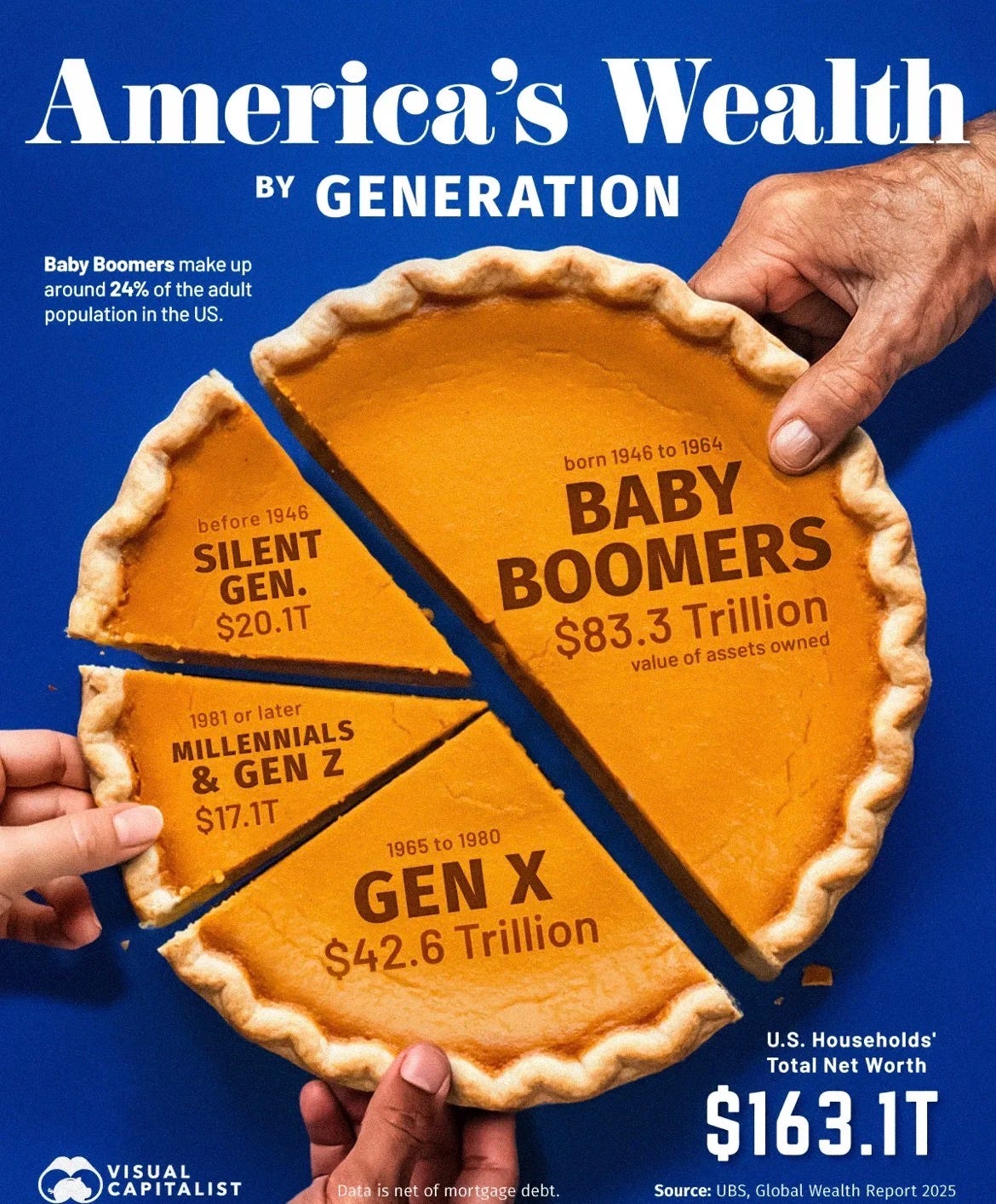
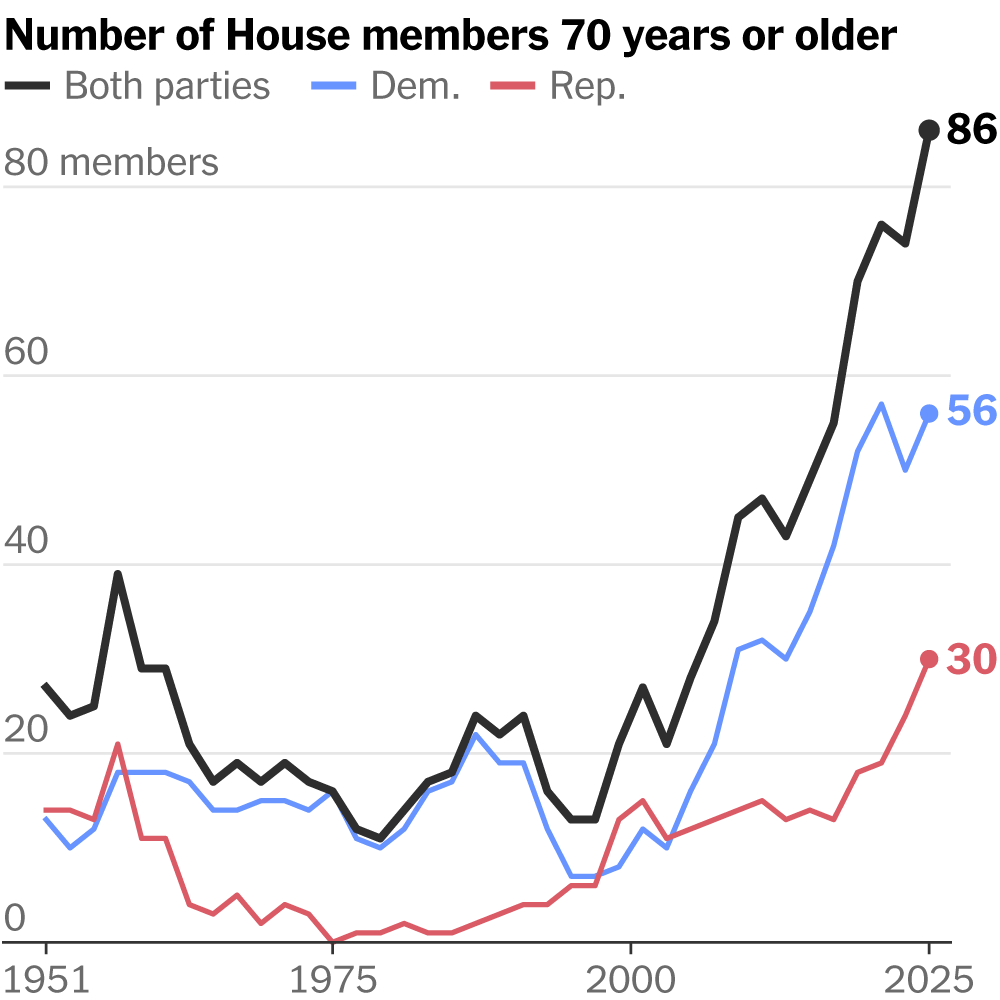
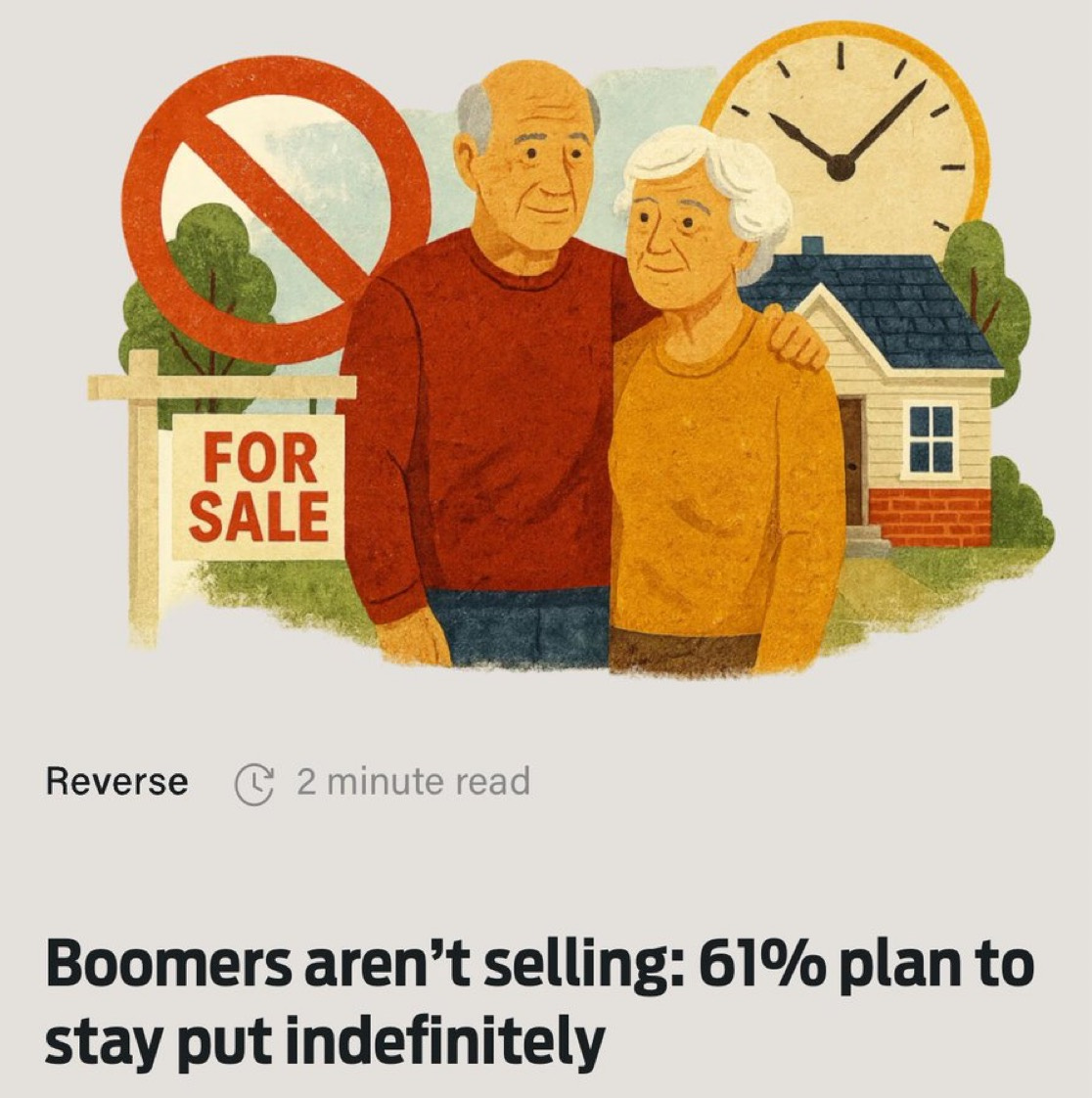
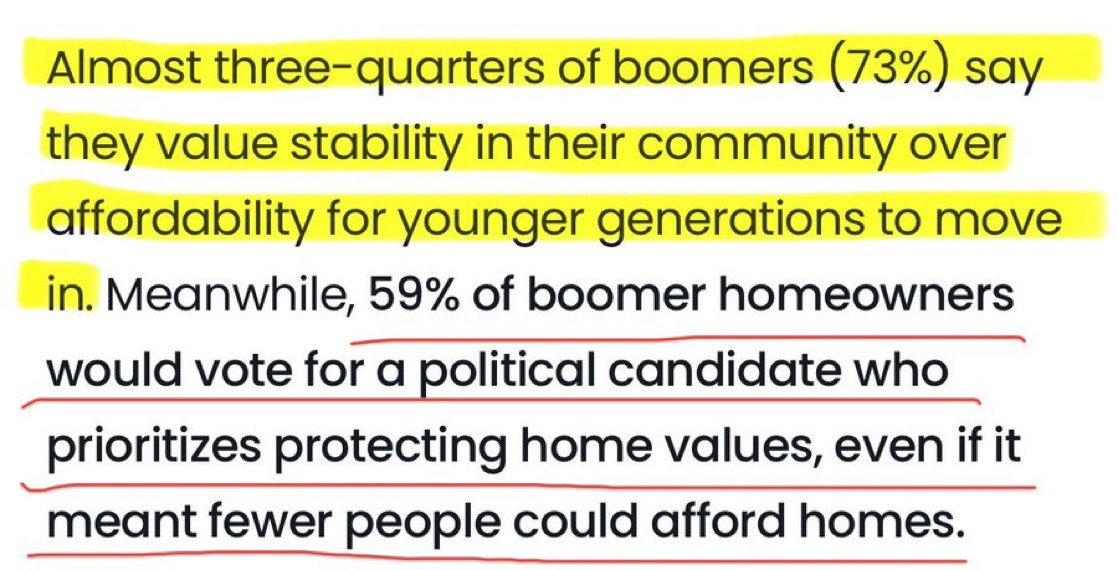
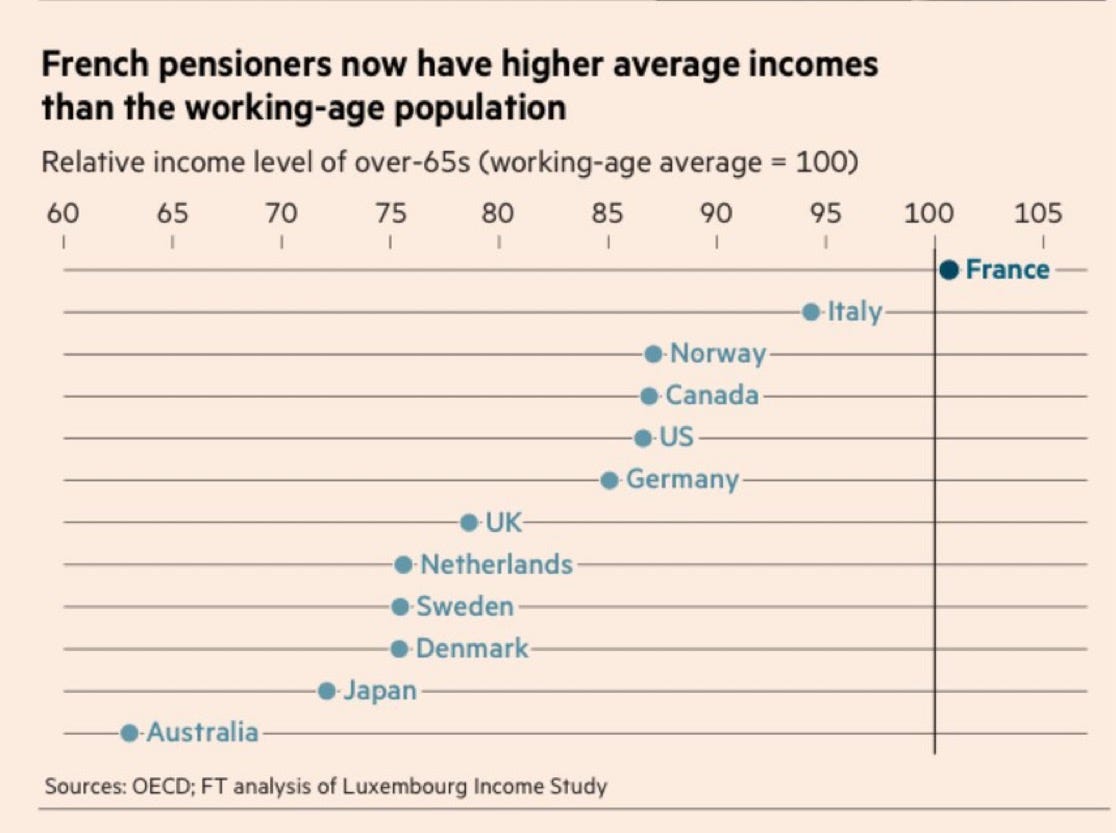
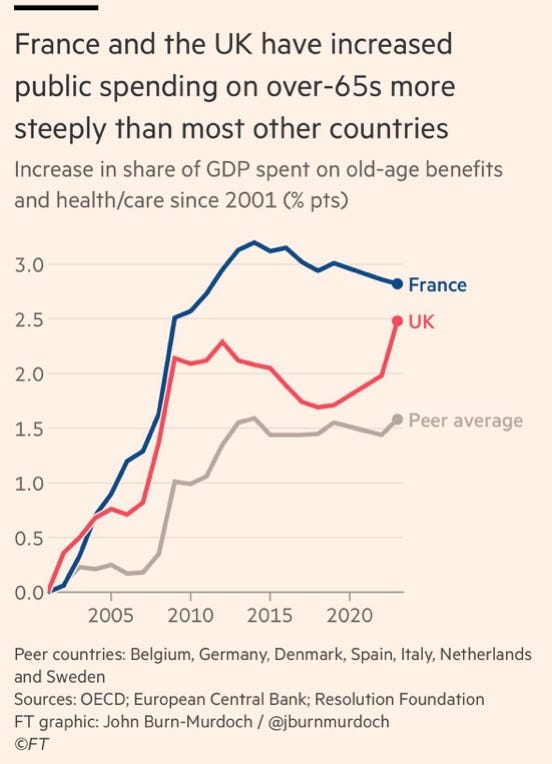
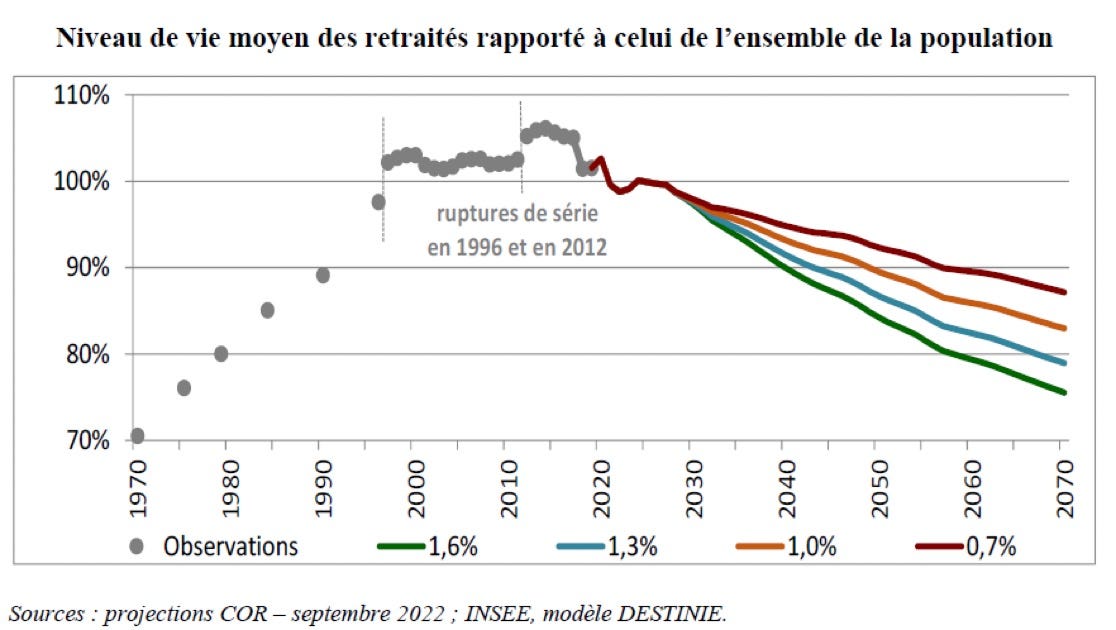
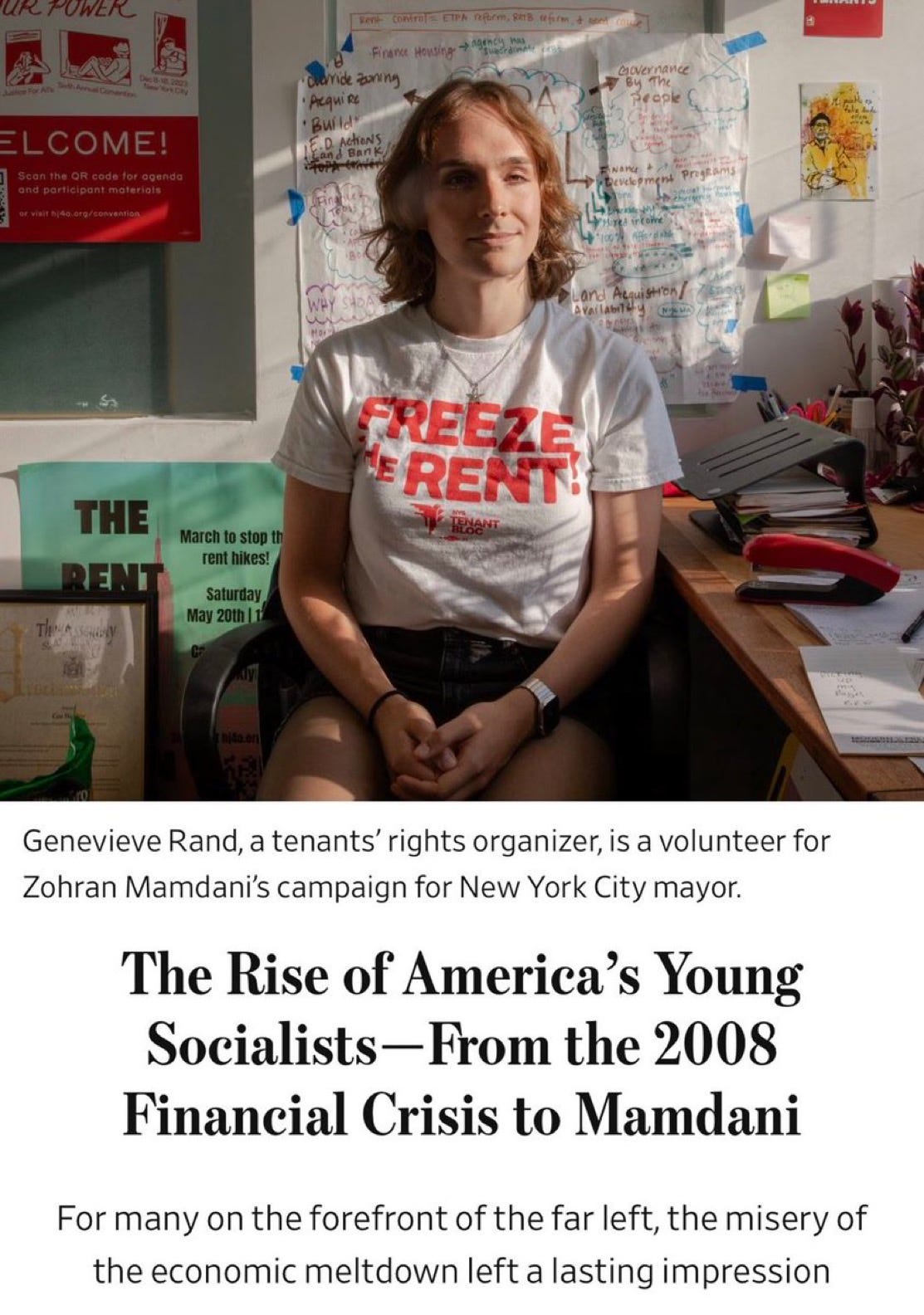
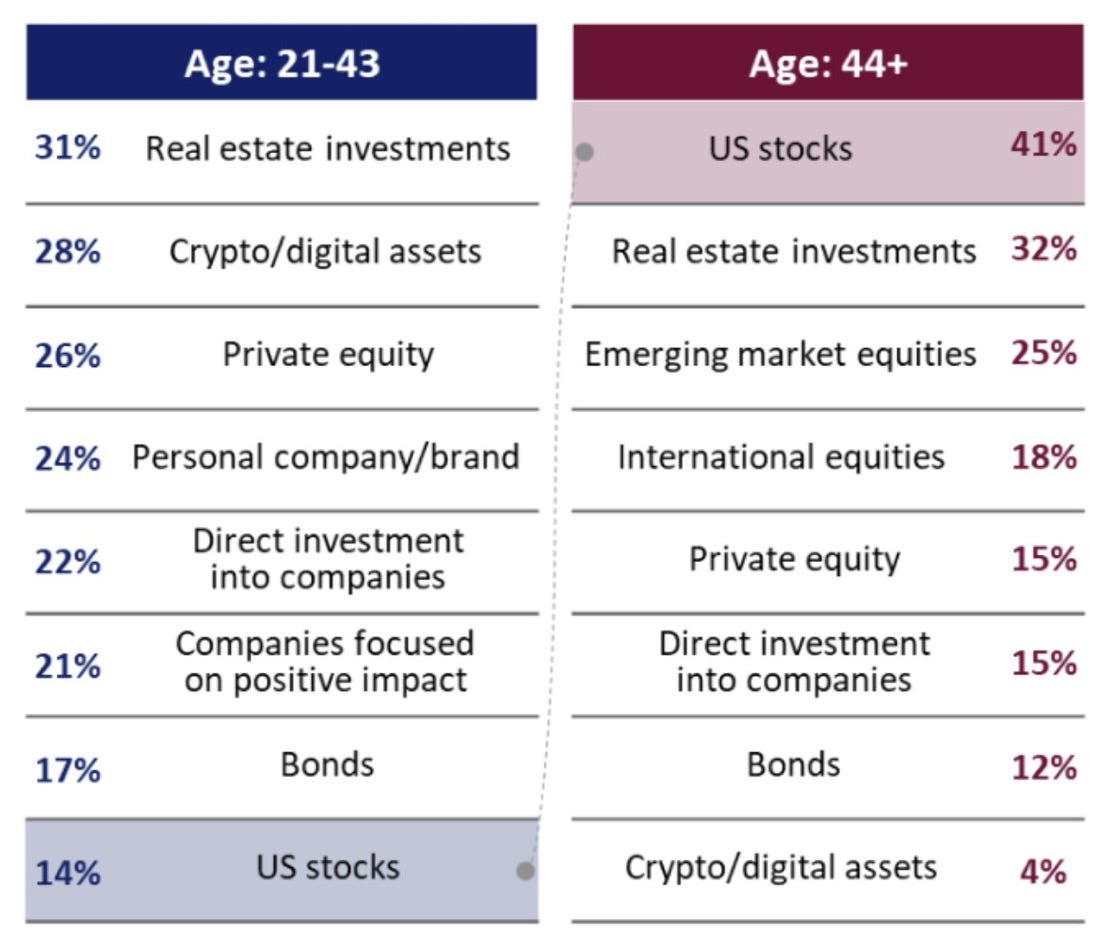
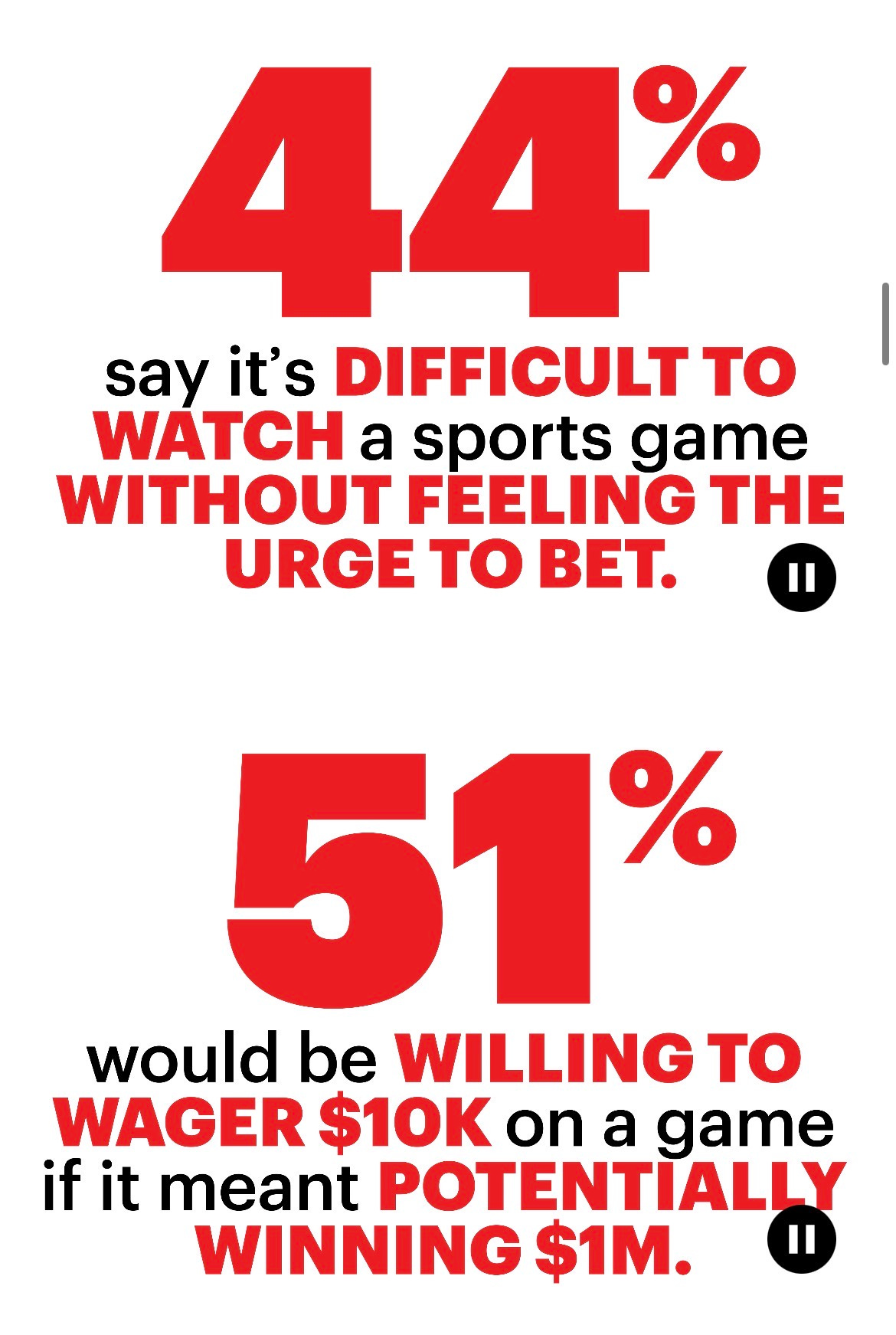

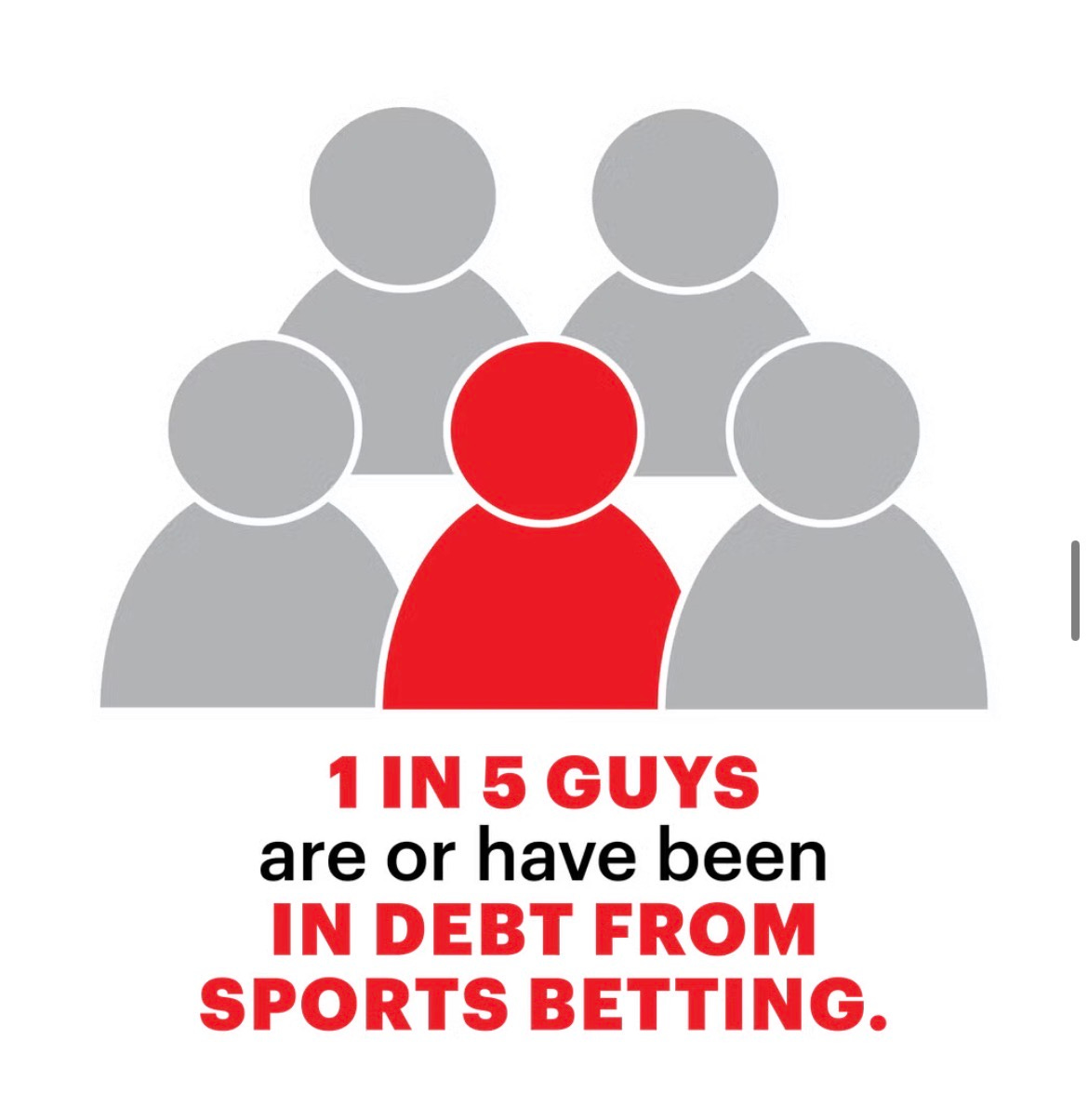
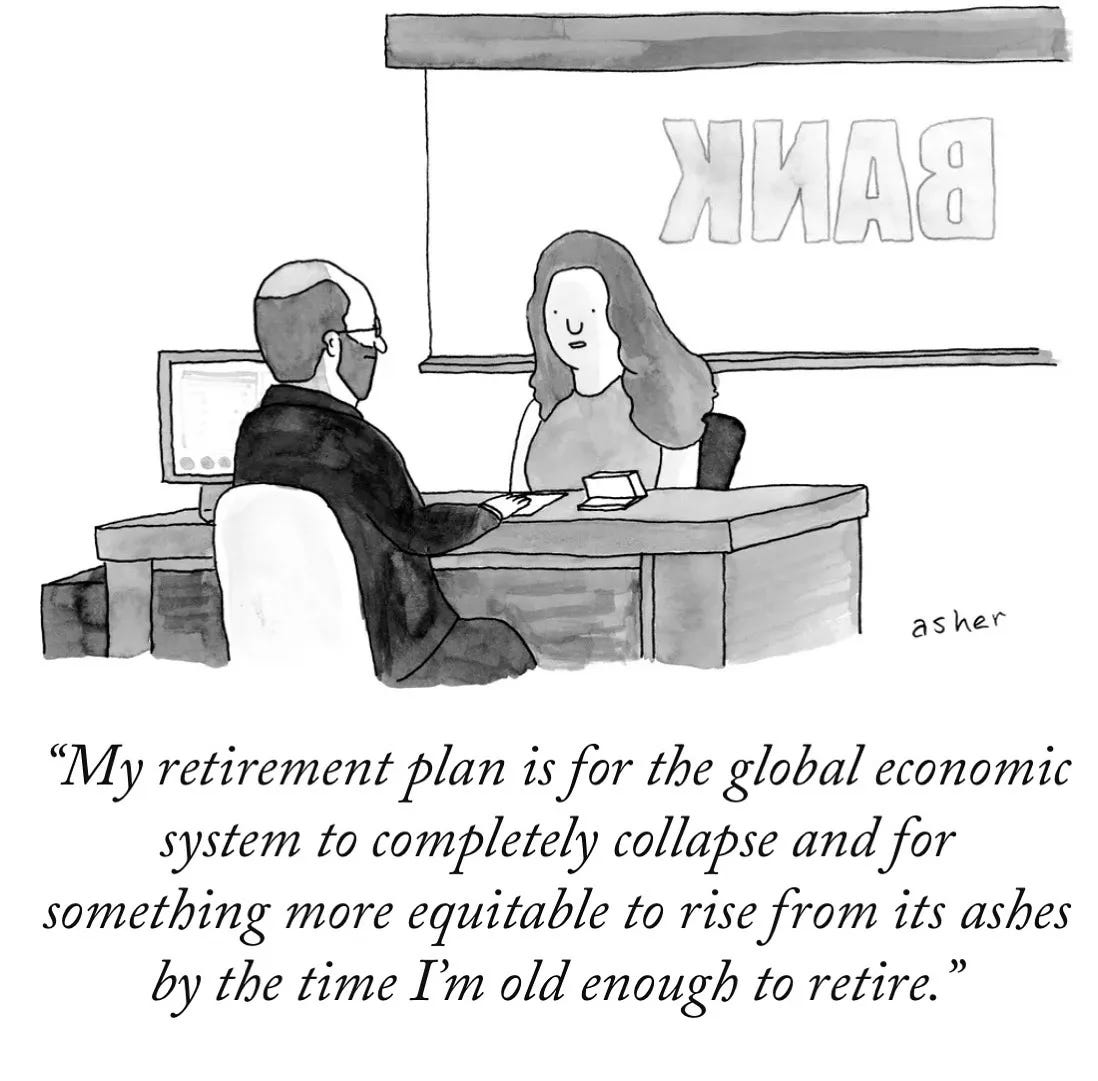
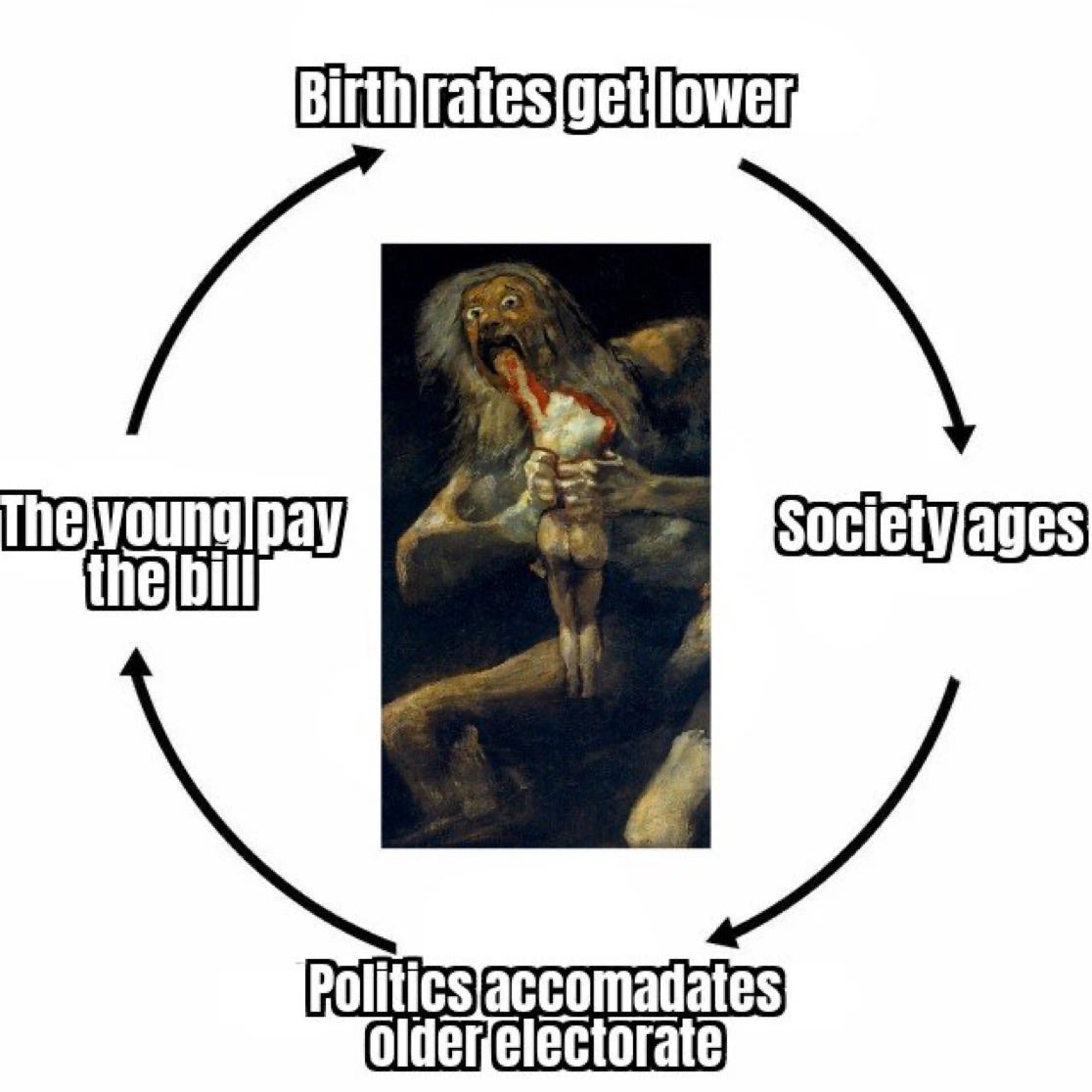
Mark Zuckerberg and Peter Thiel understood this years ago: https://www.techemails.com/p/mark-zuckerberg-peter-thiel-millennials
“Peter and I have had a number of conversations about what we expect the world to look like in 2030 so we can plan and position our future work accordingly. One theme we've discussed is that many important institutions in our society (eg education, healthcare, housing, efforts to combat climate change) are still run primarily by boomers in ways that transfer a lot of value from younger generations to boomers themselves. Our macro prediction for the next decade is that we expect this dynamic to shift very rapidly as more millennials + gen Zers can now vote and as the boomer generation starts to shrink. By the end of this decade, we expect more of these institutions to be run by and for the benefit of millennials and younger generations. I would bet we'll even see a millennial president within the next few cycles by 2032. This outlook for the future puts our current tone and positioning in stark contrast and has convinced me that we should shift the center of gravity in our messaging to be more focused on millennials…
[W]hen 70% of Millennials say they are pro-socialist, we need to do better than simply dismiss them by saying that they are stupid or entitled or brainwashed; we should try and understand why. And, from the perspective of a broken generational compact, there seems to be a pretty straightforward answer to me, namely, that when one has too much student debt or if housing is too unaffordable, then one will have negative capital for a long time and/or find it very hard to start accumulating capital in the form of real estate; and if one has no stake in the capitalist system, then one may well turn against it.
What I would add to Mark's summary is that, in a healthier society, the handover from the Boomers to the younger generations should have started some time ago (maybe as early as the 1990s for Gen X), and that for a whole variety of reasons, this generational transition has been delayed as the Boomers have maintained an iron grip on many US institutions. When the handover finally happens in the 2020s, it will therefore happen more suddenly and perhaps more dramatically than people expect or than such generational transitions have happened in the past. And that's why it's especially important for us to think about these issues and try and get ahead of them.
One example of such an "iron grip" from my colleague Eric Weinstein: Of the 67 top research universities in the US, 62 have Baby Boomer presidents (three are Silent Generation and only two are Generation X). Today, the median age of these 67 university presidents is 65 years-old... And this is very different from the recent past. Only thirty years ago, in 1990, the median age of these same university presidents was a much lower 52-years old; the older generation did not completely refuse to give up power; and therefore much greater generational diversity was to be found in university leadership.
Or, to take a small but suggestive example from US Presidential leadership: Three Presidents (Clinton, Bush 43, and Trump) were all born within 70 days of one another, in the summer of 1946. These three people were literally at the head of the Baby Boomer class that was born nine months after World War II ended in September 1945. In my mind, they somehow derived much of their power from the self-referential narcissism of the Boomers as this unusually large cohort of people voted for people like themselves and could afford to ignore anyone younger... and again, this iron grip has been maintained for a shockingly long period of time; but it will not be maintained forever.”
I’m not a boomer, but it’s seeming more likely that I’ll be vilified by my kids for having a particular birth date, much like this piece vilifies hundreds of millions of seniors, rich and poor alike. Not surprisingly it comes at a time when fewer and fewer adult children feel it’s their responsibility to help care for an ailing parent.
This resentment towards the elderly is growing substantially right now, particularly among both the far right and left. It’s ugly. It’s also ultimately self-destructive and short-sighted. The future paints us all as monsters.
I wrote a piece about it fairly recently.